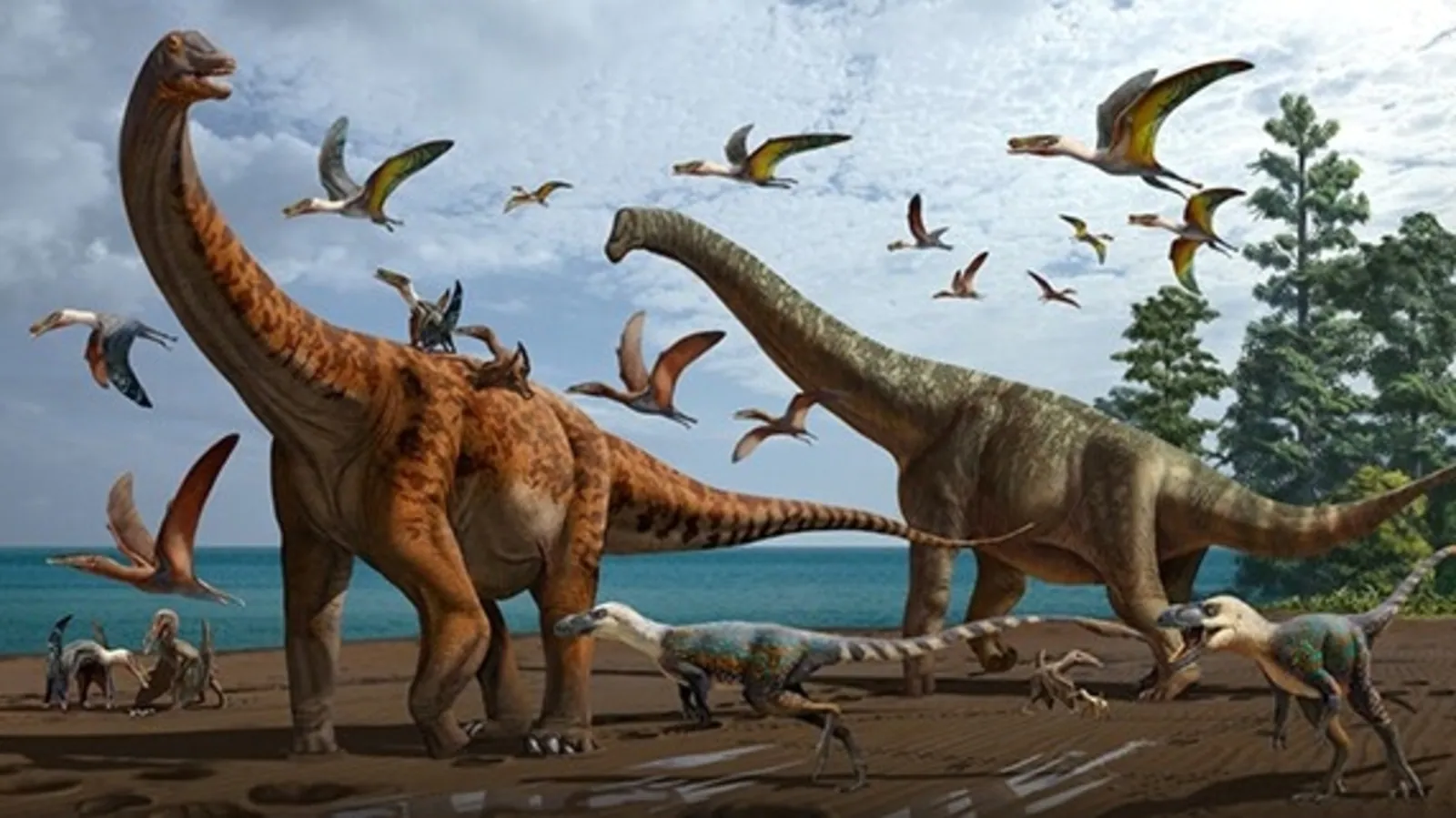Scientists have discovered two new species of dinosaurs in northwest China, a region where dinosaur fossils had never been found before, according to a study published in Scientific Reports. The study said the fossils from three different dinosaurs about 130 to 120 million years ago were found in China’s Turpan-Hami Basin about 2 to 5km apart. The researchers from the Chinese Academy of Sciences and the National Museum of Brazil published their findings in Scientific Reports, part of the Nature family of journals, on Thursday.
Scientists named the species Silutitan sinensis or “silu” and Hamititan xinjiangensis named for where the fossil specimen was found in Xinjiang. They have said that “silu” means the “Silk Road” in Chinese Mandarin pinyin, “in memory the great trade routes which connected the East and West”. “Hami” refers to the Hami city where the specimen was found.
According to the study, Silutitan sinensis is a new species of sauropod—a plant-eating dinosaur with a very long neck, long tail, large body and small head. It said that the dinosaur was found to have some characteristics in its neck vertebrae that indicate it belonged to a family of sauropods called Euhelopodidae, which have so far only been found in East Asia.
Also read | New dinosaurs species, found in 2007, largest in Australia, say researchers
Researchers said Hamititan xinjiangensis is estimated to have been more than 55 feet long and contained characteristics more similar to sauropods found in South America. The shape and ridges along the vertebrae suggest that it belonged to a family of sauropods known as Titanosaurs, which were abundant in both Asia and South America.
The Silutitan specimen is estimated to be more than 65.6 feet long and the Hamititan specimen was 55.77 feet long, making the dinosaurs almost as large as blue whales.
The third specimen may be a somphospondylan sauropod, a group of dinosaurs that lived from the late Jurassic period, about 160.3 million years ago, to the late Cretaceous period, about 66 million years ago, according to the study. It was limited to four vertebrae and rib fragments.
Also read | Study shows some dinosaur migration was delayed by climate
“We were very excited about that part of the study, and now it’s kind of a puzzle that we have to understand,” Alexander Kellner, co-author of the study and director of the National Museum in Rio de Janeiro, told ABC News. “How did this almost ‘South American’ dinosaur end up being in Asia?” the Brazilian palaeontologist asked.
Kellner said they plan to keep on digging to find out more, adding they believe that nests filled with eggs and embryonic remains of the newly discovered species are hidden beneath the surface in the region. “We keep dreaming about finding dinosaur nests there. This is our greatest hope so far,” he told ABC News.
Earlier this year, a dinosaur was found preserved while sitting on a nest of eggs with fossilised embryos in southeast China and another new species was discovered in northeast China in September last year.


